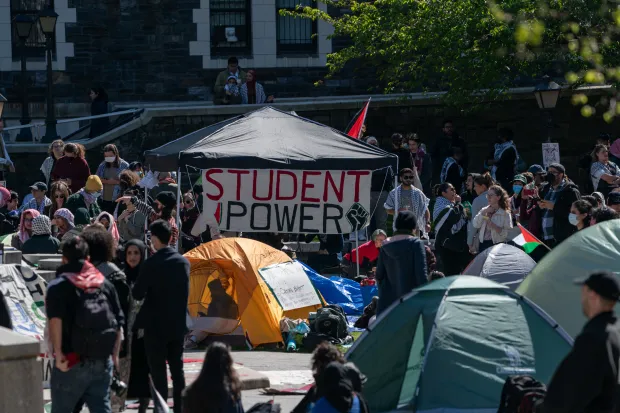“No justice, no peace!” “Hey, hey, ho, ho, [so-and-so] has got to go!” “My body, my choice!” “[Our] rights are human rights!”
If you’ve been around American colleges recently, you’ve probably heard these slogans chanted by groups of student activists, seen these phrases printed on posters, or encountered these words on social media. Activism and protests have always been common among college students, especially in response to current events. As an undergrad, I fought to get an in-person graduation ceremony for the class of COVID-19 (2020 and 2021) once it was safe to do so, in May 2022. During my master’s program, I negotiated with administrators for disability inclusion on campus, and continue to do so. Through these endeavors, I’ve learned a few things that any budding activist, especially a student activist, might find helpful.
1. Identify a cause.
This first step might seem straightforward, but it requires much thought and consideration. While there might be many causes that matter, it is important for any activist to find a cause that stands out. Finding a cause that you are passionate about, something you think about a lot and that you want to make a change in, is extremely important.
Your “cause” doesn’t have to be something as big as world hunger; it can be something smaller scale, like adding a prayer space for students on campus, getting an ASL interpreter at graduation, or streamlining the process to choose a major.
2. Connect with allies.
Finding people who have the same passion for an issue that you do is also important. The allies you make will shape your ideas on how to proceed in your activism. Allies can be students, faculty, staff, alumni, external community members, friends, and family. In fact, the more diverse groups your allies belong to, the more perspectives you will get to help guide you in how to proceed.
3. Read about similar problems & laws.
Chances are that you aren’t the first person to encounter this challenge. Read up on different social justice issues with similar themes to find out what others have done. Even if their ideas won’t work for you, chances are they will help you find ways to support your chosen cause.
4. Document problems.
Make a record of anything that shows that your cause needs action. Save emails, take photos, and check your local laws to see if you can record private conversations in your state. Being able to show why your cause should be addressed will help to garner support and move others towards action.
5. Talk openly with challengers.
Listen to the other side of the issue. Although you may not agree, knowing what the opposing arguments are helps you to better understand and fight for your beliefs. Similarly, listening to the other side helps to create a dialogue to rectify problems.
6. Come up with solutions.
Think about how to address the problems you are facing. What are some creative ideas to fix the problem? Plan out some solutions that you think would be effective in advocating for your chosen cause. Plan out some ineffective solutions, too—they might inspire a better idea!
7. Meet with officials to propose solutions and negotiate.
Meet with people who can help make change. If on campus, look up a program chair or a specific office and start there. If not on campus, look up the power structures of the organization you are working with and start with the most local level.
Sometimes this doesn’t work, and you need to retrace your steps. Maybe you need to create more alliances, find more evidence, try a new solution, or even find a different official to talk to. Whatever the case, be prepared to return to the metaphorical drawing board.
Keep in mind that while you do need to talk to officials, sometimes they’ll have their own ideas on how to solve a problem, or bring up challenges that you might not be aware of. You might need to negotiate your solutions with them, or talk to a higher-ranking official if not.
8. Protest with others
When all else fails, it’s time to rally your allies and start a protest. Showing that the community is behind you and supporting your cause helps to promote it.
While we often think of protests as a large gathering of people chanting outside a building or facility, protests don’t necessarily have to be large gatherings. Acts of protest can include letters in the paper, social media campaigns, and other public-facing acts.
9. Next Steps
Activism isn’t a one-and-done thing. Activism requires time, effort, and energy over a period of time. Even once officials agree to change, continue to work with them and ensure they follow through. And perhaps, if an administration fails to keep its word and enact the changes it has agreed to, it is time to head back a few steps, to meet with officials and prepare to protest for change again. Speaking of which, I have some emails to write…





